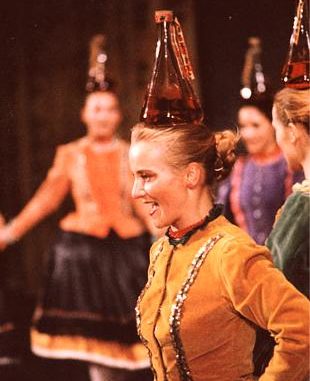
by Kálmán Dreisziger
Usually consists of a slow and a fast part.
Both Hungarians and Slovaks consider it to be their national dance.
Born of earlier dance and musical roots at the later part of the 18th and turn of the 19th centuries.
Part of a larger movement when the awakening of “national” consciousness in Europe produced new developments in music and dance. [Similar to the Mazurka, Polka, Waltz].
Csárdás became the most popular dance in the Carpathian Basin.
Around the same time when the Csárdás swept into fashion as a couple’s dance, a new man’s dance called the Verbunk [recruiting dance] was also born.
The two dances are closely related, in both musical and movement style. They were usually danced in succession, the Verbunk first, followed by the Csárdás.
Both the music and the dance incorporate influences from earlier styles and exhibit regional differences due to geographic, religious or ethnic isolation.
IN TRANSYLVANIA: The effect of earlier dances is easiest to discern. Here the Csárdás shows an influence of older turning/spinning dances [Forgatos/Invirtita] of the Hungarians and Romanians.
IN WESTERN HUNGARY: The dance is much simpler. The dominant “motif” in the slow part is the two-step Csárdás . The dance is a mostly “downbeat” [first movement starts downward to the first beat of the music] and the couples dance together in the so-called “closed-couple” position [male’s hands are on the women’s waist; her hands are on his shoulders]. The tempo jumps suddenly from slow to fast, while the dance is decorated with dips and fancy footwork.
IN EASTERN HUNGARY AND SLOVAKIA: Here the Csárdás is “upbeat” [first movement is upward to the first measure of the music] and is more complex than in the west. Often the partners dance apart, almost as if to tease each other. This gives the dance a playful, alluring and romantic character. The musical tempo increases gradually from slow to fast Csárdás [unlike the sudden switch in the Western Csárdás]. Since much of the dance is not done in closed-couple formation, there is ample opportunity for individual improvisations, which typically include a wonderful variety of boot-slapping steps for the men.
